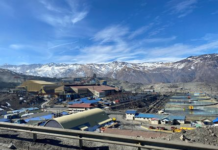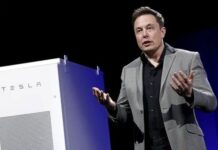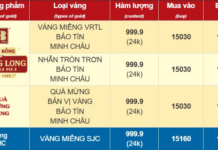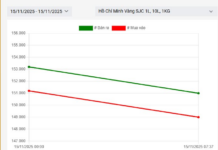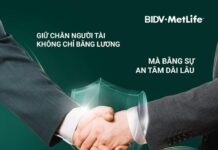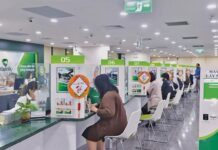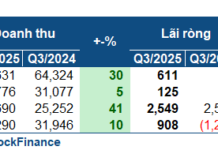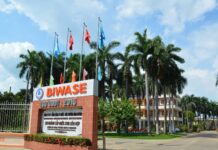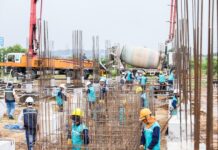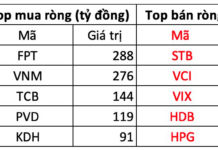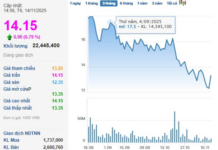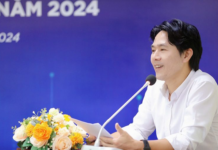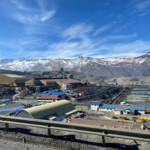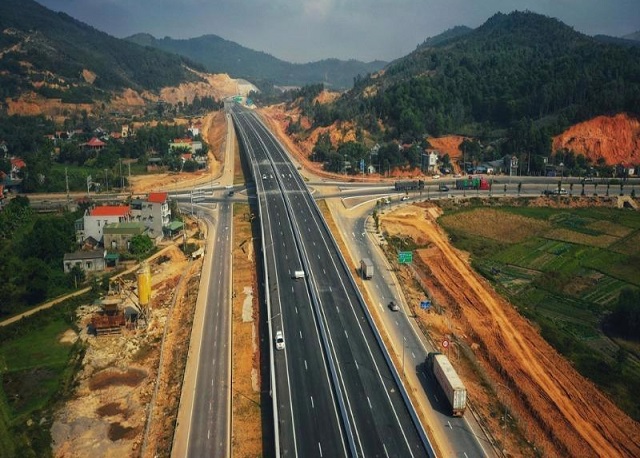
Prioritize resources to complete the East North – South highway, East – West highways, and multimodal transportation routes according to the plan
|
After 10 years of implementation, Resolution No. 13-NQ/TW of the Party Central Committee’s 11th tenure on building synchronized infrastructure with the aim of making our country basically become a modern industrial country by 2020 (Resolution No. 13-NQ/TW) has achieved many important results. The awareness of Party committees at all levels, party organizations, government, businesses, and society about the role and special importance of infrastructure in socioeconomic development, industrialization, and modernization of the country has seen positive changes. The legal system has been focused on improvement and access to international practices, especially policies on planning, investment, public investment, public-private partnership… Based on that, resources have been strengthened and a favorable environment has been created to rapidly develop the infrastructure system, shaping a new development landscape for the country. Many programs, projects, and works have been put into operation and effectively utilized, especially in transportation, energy, irrigation, urban areas, information and communication; emphasis has been placed on developing educational and training infrastructure, science and technology, healthcare, culture, and sports, promoting economic growth, ensuring social welfare and security, and contributing to the goal of industrializing and modernizing the country.
However, the implementation of the basic goal of Resolution No. 13-NQ/TW has not met the set requirements, has not made a breakthrough in resource mobilization, and has not formed a modern and coherent infrastructure system that ensures fast and sustainable development. Some mechanisms and policies are slow to be issued and lack uniformity; state management, decentralization, and devolution still have limitations. The development of multi-target economic and social infrastructure combined with national defense, security, and climate change adaptation has not been given enough attention; economic and technical infrastructure is not synchronized and lacks connectivity within regions, inter-regions, and among infrastructure sectors; investment in new construction, upgrade, maintenance, and repair of infrastructure projects still faces difficulties and shortcomings. Social, cultural, and sports infrastructure, especially in rural, mountainous, remote, border, and island areas, has not been invested adequately; traffic congestion, flooding, and environmental pollution have been prolonged for many years, affecting people’s lives in some major cities.
The main causes of these limitations are mainly due to the limited awareness, capacity, and thinking of party committees, party organizations, government, and leaders at all levels; some policies and laws are not synchronized, not in line with reality and development trends; coordination among levels and sectors is not close and effective; national resources are limited and fail to attract effective non-state resources; planning and planning management work lacks long-term vision, comprehensiveness, and consistency; investment management, inspection, examination, and supervision work is not effective.
To continue to implement Resolution No. 13-NQ/TW effectively associated with Resolution of the 13th Party Congress, Resolution No. 29-NQ/TW of the 6th plenum of the 13th Central Committee on continuing to promote industrialization and modernization of the country by 2030, with a vision to 2045, and Conclusion No. 45-KL/TW of the 6th plenum of the 13th Central Committee on orienting the national master plan for 2021 – 2030, with a vision to 2050 and meet the development requirements of the new period, the Politburo requires party committees, party organizations, government, officials, and party members to focus on effectively implementing the following tasks and solutions:
Continue to effectively implement the viewpoint, objectives, and orientations for the development of transportation, power, irrigation, climate change response, urban areas, industrial parks, economic zones, commerce, information, education and training, science and technology, healthcare, culture, sports, tourism, and key solutions to develop a synchronized, modern, and one-step-ahead infrastructure system; have priority, focus on breakthrough and fundamental areas; exploit and enhance the existing infrastructure system, strengthen inter-regional, inter-provincial, inter-area, and regional connectivity; rational and effective use of land, water, and forest resources and other resources.
By 2030, develop an infrastructure system commensurate with a developing country, with a modern industry, and high average income; complete national key infrastructure projects, large-scale projects, and connect with the region and the world. By 2045, develop a modern infrastructure system associated with a developed country, with a high income; connect and integrate with global development.
Urgently review, amend, and issue policies and laws related to the development of infrastructure in association with the goal of building a modern industry by 2030, especially policies and laws on public investment, planning, public-private partnership, state budget, digital economy, digital society, digital economy, digital society… Study and pilot-test the model of public investment – private management, private investment – public use; improve the TOD model of urban development; establish special financial mechanisms for cultural and social infrastructure projects; develop mechanisms and policies strong enough to form some leading economic corporations with adequate resources, modern management capabilities, access to, transfer, and mastering of advanced investment technology, construction of significant infrastructure works, strategic for national development.
Improve the effectiveness and efficiency of state management, decentralization, and devolution associated with the organizational capacity to implement and enhance the responsibility of local party committees, governments, and leaders in investment decision-making; promote administrative reform to create coherence between investment procedures and procedures for land, construction, bidding, and the environment; improve the investment, business environment, and create conditions for the non-state economic sector to participate; decentralize investment and assign responsibility to decision-makers for investment.
Develop midterm public investment plans with a focus, a focal point, close coordination between the central and local levels and between localities in developing the infrastructure system and planning and socio-economic development. Review and establish a database on the economy, society, resources, and the environment of regions and localities to ensure consistency and connectivity with the national database system.
Improve coordination mechanisms, enhance the quality of implementation of policies and laws on planning, investment, construction, mobilization, and use of land resources; speed up the compensation, site clearance, and construction of projects; study and issue mechanisms and policies to shorten the compensation and clearance process; separate land recovery projects, compensation, and support for relocation from investment projects according to planning.
Mobilize and effectively use resources, prioritize allocation of state budget capital for important projects, projects with interregional impacts, promote rapid and sustainable economic development, and projects that cannot recover capital or are difficult to attract investment from the non-state sector; enhance the mobilization of social resources. Continue to mobilize ODA capital, concessional loans associated with improving the effective use; develop the financial market to supply capital, diversify investment subjects, investment forms participating in the capital market. Study the formation of an infrastructure development fund, apply flexible debt ceilings associated with repayment capacity to increase resources and develop the infrastructure system quickly.
Focus on investing and early putting into operation urgent and key transportation projects, road, railway, marine, inland waterway, and aviation routes connecting localities, regions, and internationally. Develop energy infrastructure, especially ensuring sufficient and stable supply for socioeconomic development and energy security; multi-target water infrastructure, ensuring water security associated with natural disaster prevention and response and climate change adaptation; synchronized urban infrastructure, modern, especially in large cities; make a breakthrough in the development of information technology and digital infrastructure.
Prioritize resources to complete the East North – South highway, East – West highways, and multimodal transportation routes according to the plan; international airports; major seaport infrastructure, inland waterway routes with significant transport demand; North – South high-speed railway project, Lao Cai – Hanoi – Hai Phong, Lang Son – Hanoi, Mong Cai (Quang Ninh) – Hai Phong, Ho Chi Minh City – Can Tho, Bien Hoa – Vung Tau, Thu Thiem – Long Thanh… Continue to invest in urban railways, large-scale urban transportation systems in Hanoi, Ho Chi Minh City, and other major cities. Develop synchronized and diversified forms of power sources, rational structure, reasonable cost, developing renewable energy sources, new energy, clean energy suitable for each stage of economic development. Upgrade and build important water reservoir systems, proactively prevent and respond to natural disasters, floods, landslides, droughts, salinity intrusion, environmental protection, and climate change adaptation. Focus on building a digital infrastructure with advanced and modern technology; develop national databases, large-scale databases, large data centers; ensure safety and information security. Improve the quality of industrial park and economic zone infrastructure, eco-friendly and sustainable; prioritize investment in transportation infrastructure, ring roads, drainage projects, wastewater treatment, flood prevention in major cities; invest in centralized waste treatment facilities with synchronized and modern technology.
Build a network of education and training, science and technology, meeting human resource needs for development, prioritize investment in key areas for the development and improvement of the efficiency of the national innovation system; develop a national healthcare network that meets the requirements of care, protection, and improvement of people’s health, aiming for fairness, quality, efficiency, and international integration; develop modern cultural facilities and a network of cultural institutions to perform well the task of preserving and promoting the value of national culture; build a synchronized and modern sports network; significantly develop tourism infrastructure to make tourism truly a key economic sector with international competitiveness; invest in basic, synchronized, and modern rural infrastructure, ensuring the connection between rural and urban areas and among regions. At the same time, continue to develop infrastructure to ensure social welfare.
Provincial Party Committees, City Party Committees, party boards, party leadership boards, and party organizations at the Central level should study, thoroughly grasp, strengthen leadership, direction, concretize, and organize effective implementation of Resolution No. 13-NQ/TW and this Conclusion.
The Party delegation of the National Assembly, party committees of the Government, guide, supervise, inspect, conduct periodic reviews, summation, reporting to the Party Central Committee on the results of implementing this Conclusion.
The Party delegation of the Government, in coordination with relevant agencies, guides, monitors, inspects, checks, periodically reviews, summarizing, report to the Politburo on the results of implementing this Conclusion.
The Government Party leadership, direction, coordinate with relevant agencies to guide, inspect, monitor, check, report periodically on the effective implementation of this Conclusion in association with the Party’s resolutions and viewpoints; direct ministries, agencies, and localities to expeditiously establish a list of infrastructure works and projects, and implement them in connection with planning and socioeconomic development. Study the construction of a plan to submit to the 14th Party Central Committee for consideration and issuance of a new resolution on developing a synchronized and modern infrastructure system.
The Vietnam Fatherland Front, political – social organizations, and the Ho Chi Minh Communist Youth Union strengthen propaganda, social criticism, mobilize the active participation of the people in implementing Resolution No. 13-NQ/TW and this Conclusion.
The Government Party leadership coordinates with relevant bodies to guide the implementation of this Conclusion associated with the related resolutions and policies; arrange resources; regularly inspect, inspect, monitor the implementation of this Conclusion.
The Government Party leadership directs, coordinates, organizes the effective implementation of this Conclusion in connection with the Party’s resolutions and relevant guidelines; guides ministries, sectors, and localities to promptly develop a list of infrastructure projects, deploy implementation in accordance with planning, and socioeconomic development. Study the construction of a plan to submit to the 14th Party Central Committee for consideration and issuance of a new resolution on the synchronized and modern development of the infrastructure system.

